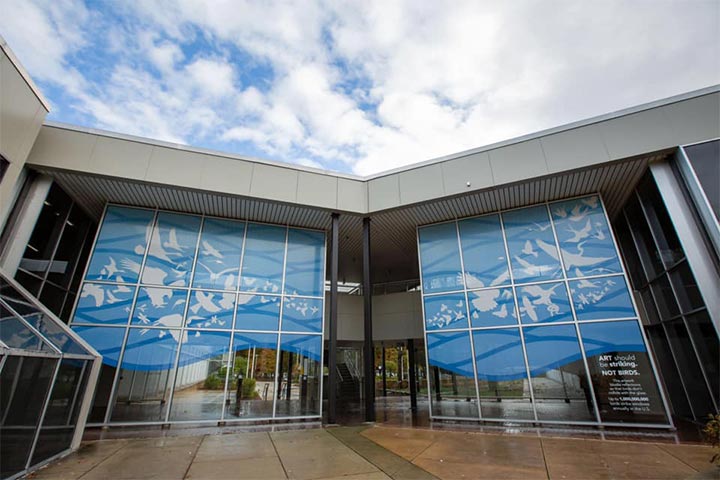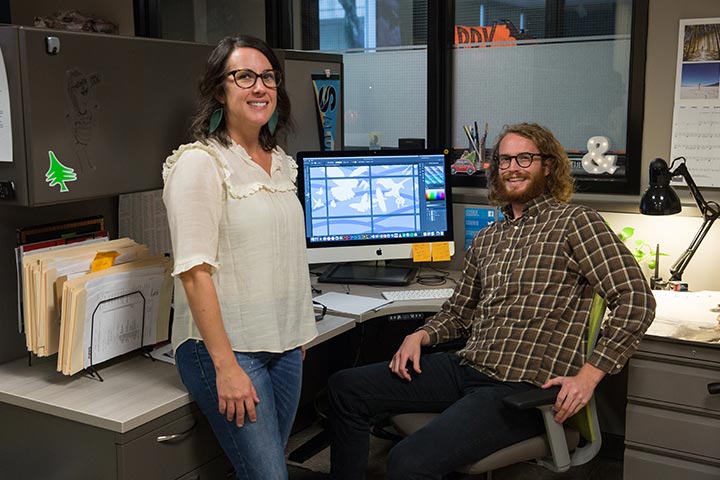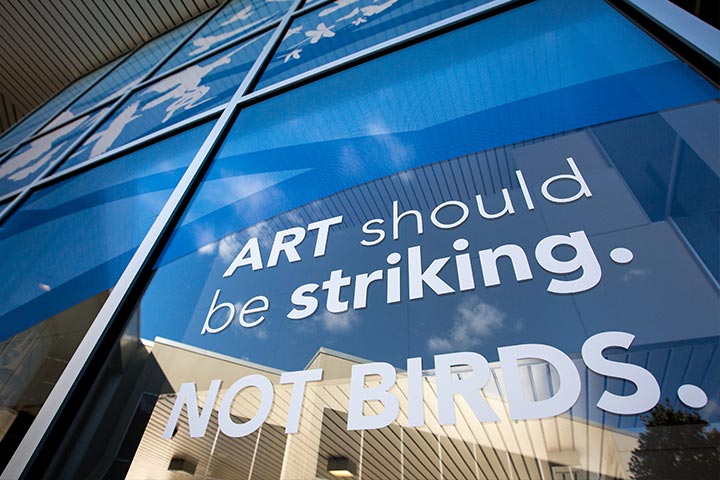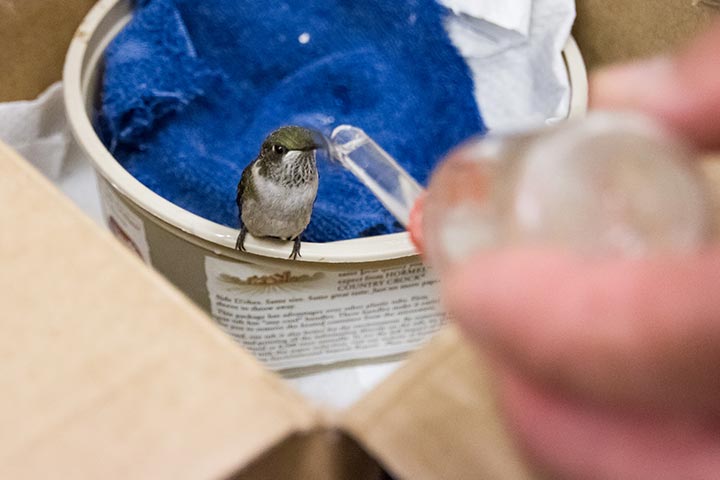Art & Science Collide to Reduce Bird Strikes
By Stockton Now Staff

By Stockton Now Staff

A flock of birds has taken flight in artistic form across the K-Wing breezeway on Stockton University's Galloway campus to warn migrating birds to steer clear of the windows.
The vinyl mural now raises awareness with its message, "Art should be striking. Not birds," along with an explanation of how the art saves birds by eliminating reflections. These reflections of sky and forest on glass become indistinguishable from buildings and clear skies and lead to birds colliding with windows.
The art spans the K-Wing breezeway, located between Lake Fred and the Campus Center. This expanse is an especially dangerous spot because it is a large double-sided window space adjacent to prime bird habitat in the Pinelands National Reserve.
The solution was a collaborative effort between Stockton's School of Natural Sciences and Mathematics, University Relations & Marketing, the Division of Facilities & Operations and the Biodiversity Committee with funding provided by the President's Office.
John Rokita ’78, assistant supervisor of Academic Lab Services, and Lester Block ‘79, professional services specialist for the School of Natural Sciences & Mathematics, used to walk the campus in shifts with fellow student Jeffrey Sherman '78 to monitor and quantify bird strikes.
Rokita has recorded data on 851 window kills from 1979 to 2018, documented in a 150-sheet notebook with the date, species information, location found, cause of death and how the specimen was preserved. Taxidermy has enabled several of Stockton’s window-strike victims to live on as educational tools in the ornithology collection.
Alice Sikora of the Office of Institutional Research volunteered to transform the data entries in the notebook into an online spreadsheet to identify high impact locations and peak months for window collisions on campus. Sikora and Susan Allen ’09, ’14, professional services specialist in University Relations and Marketing, presented the data to Stockton’s Biodiversity Committee and worked with Cynthia Gove, project manager, to coordinate plans with Facilities & Operations. Christopher Deets ’99, ’00 works as an outreach and education coordinator for the U.S. Fish and Wildlife Service’s National Migratory Bird Program and provided Stockton with best practices and guidance. Allen was awarded grant funding for the project through the 2020 Strategic Plan. Over the past decade, she has documented window collisions, bird rehabilitation efforts, Stockton's taxidermy collection and the process of designing a solution.
Graphic designers Heidi Hartley and Bernie DeLury combined their talents to fill the window space with a variety of bird species, including our mascot the osprey, and other winged creatures like butterflies and dragonflies.
The design was printed on perforated film and adhered to the exterior glass to block reflections on both sides of the breezeway. Those walking through the breezeway can see an unobstructed view of the outside. Viewers from the outside see an educational mural and birds in flight are redirected to avoid the windows.



Learn more about Stockton's Labs.